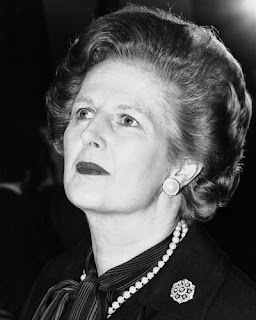This is all cut and pasted from the
Yale Film Analysis Website. I have taken out bits that aren't relevant.
Cinematography
Section 1 - Quality
This section explores some of the elements at play in the construction of a shot. As the critics at Cahiers du cinéma maintained, the "how" is as important as the "what" in the cinema. The look of an image, its balance of dark and light, the depth of the space in focus, the relation of background and foreground, etc. all affect the reception of the image. For instance, the optical qualities of grainy black and white in Battle of Algiers (Gillo Pontecorvo, Maarakat madinat al Jazaer, Algeria, 1965) seem to guarantee its authenticity. On the other hand, the shimmering Technicolor of a musical such as Singin' in the Rain (Stanley Donen, 1952) suggests an out-of-this-world glamor and excitement.
COLOR
[…] Apart from the added realism or glamor that a color image could provide, color is also used to create aesthetic patterns and to establish character or emotion in narrative cinema. In Federico Fellini's extravagant Juliet of the Spirits (Giulietta degli Spiriti, 1965) colors separate the bourgeois reality and the fantasy daydreamings of the title character, who partyhops between black and white and reds and purples.
[…]
CONTRAST
The ratio of dark to light in an image. If the difference between the light and dark areas is large, the image is said to be "high contrast". If the difference is small, it is referred to as "low contrast" Most films use low contrast to achieve a more naturalistic lighting. High contrast is usually associated with the low key lighting of dark scenes in genres such as the horror film and the film noir. A common cliche is to use contrast between light and dark to distinguish between good and evil. The use of contrast in a scene may draw on racist or sexist connotations.
[…]
DEEP FOCUS
Like deep space, deep focus involves staging an event on film such that significant elements occupy widely separated planes in the image. Unlike deep space, deep focus requires that elements at very different depths of the image both be in focus.
[…]
While deep focus may be used occasionally, some auteurs use it consistently for they believe it achieves a truer representation of space. Directors like Jean Renoir, Orson Welles, Hou Hsao-Hsien, or Abbas Kiarostami all use deep focus as an essential part of their signature style.
SHALLOW FOCUS
A restricted depth of field, which keeps only one plane in sharp focus; the opposite of deep focus. Used to direct the viewer's attention to one element of a scene. Shallow focus is very common in close-up […]
Shallow focus suggests psychological introspection, since a character appears as oblivious to the world around her/him. It is therefore commonly employed in genres such as the melodrama, where the actions and thoughts of an individual prevail over everything else.
DEPTH OF FIELD
The distance through which elements in an image are in sharp focus. Bright light and a narrow lens aperture tend to produce a larger depth of field, as does using a wide-angle rather than a long lens. A shallow depth of field is often used as a technique to focus audience attention on the most significant aspect of a scene without having to use an analytic cut-in.
[…]
EXPOSURE
A camera lens has an aperture that controls how much light passes through the lens and onto the film. If the aperture is widened, more light comes through and the resultant image will become more exposed. If an image is so pale that the detail begins to disappear, it can be described as "overexposed". Conversely, a narrow aperture that allows through less light will produce a darker image than normal, known as "underexposed". Exposure can be manipulated to guide an audience's response to a scene.
In his film Traffic (2000), Steven Soderbergh decided to shot all of the sequences in the Northern Mexico desert overexposed. The resulting images give an impression of a barren, desolated land being mercilessly burnt by the sun, a no-man's land over which police and customs have no control.
[…]
TELEPHOTO SHOT
An image shot with an extremely long lens is called a telephoto shot. The effect of using a long lens is to compress the apparent depth of an image, so that elements that are relatively close or far away from the camera seem to lie at approximately the same distance. In this first shot from Payback (Brian Helgeland, 1999), we can clearly see there is a considerable distance beteen the fallen body and the red car.
Yet, when a telephoto lens is used for a close-up of Mel Gibson, his face looks like it is pressed against the car! Here a telephoto lens create a shallow space, which combines with extreme canted framing to suggest the physical and psychological disarray of a man who has been betrayed, shot, and left for dead.
NEXT TIME: Framing


















































